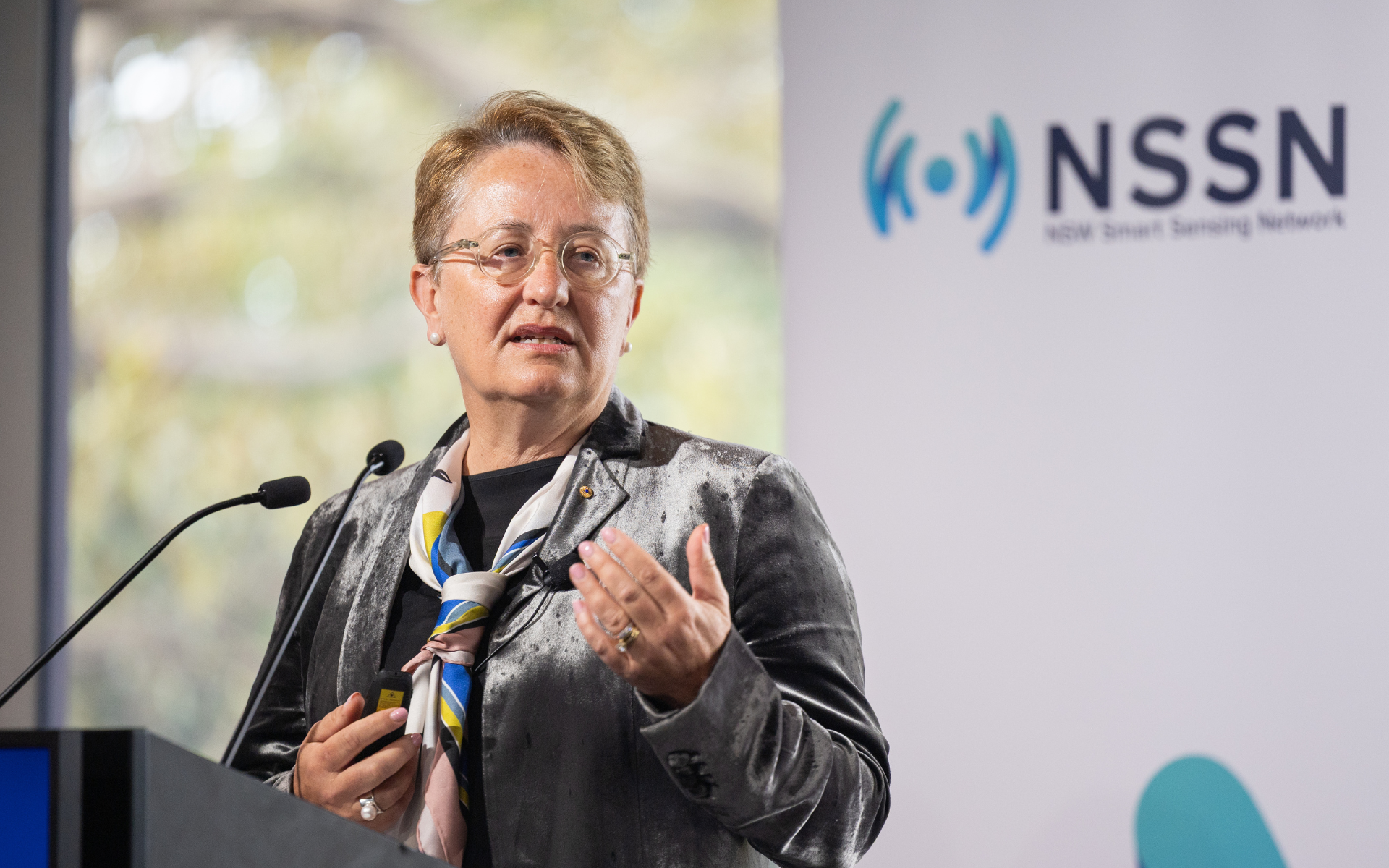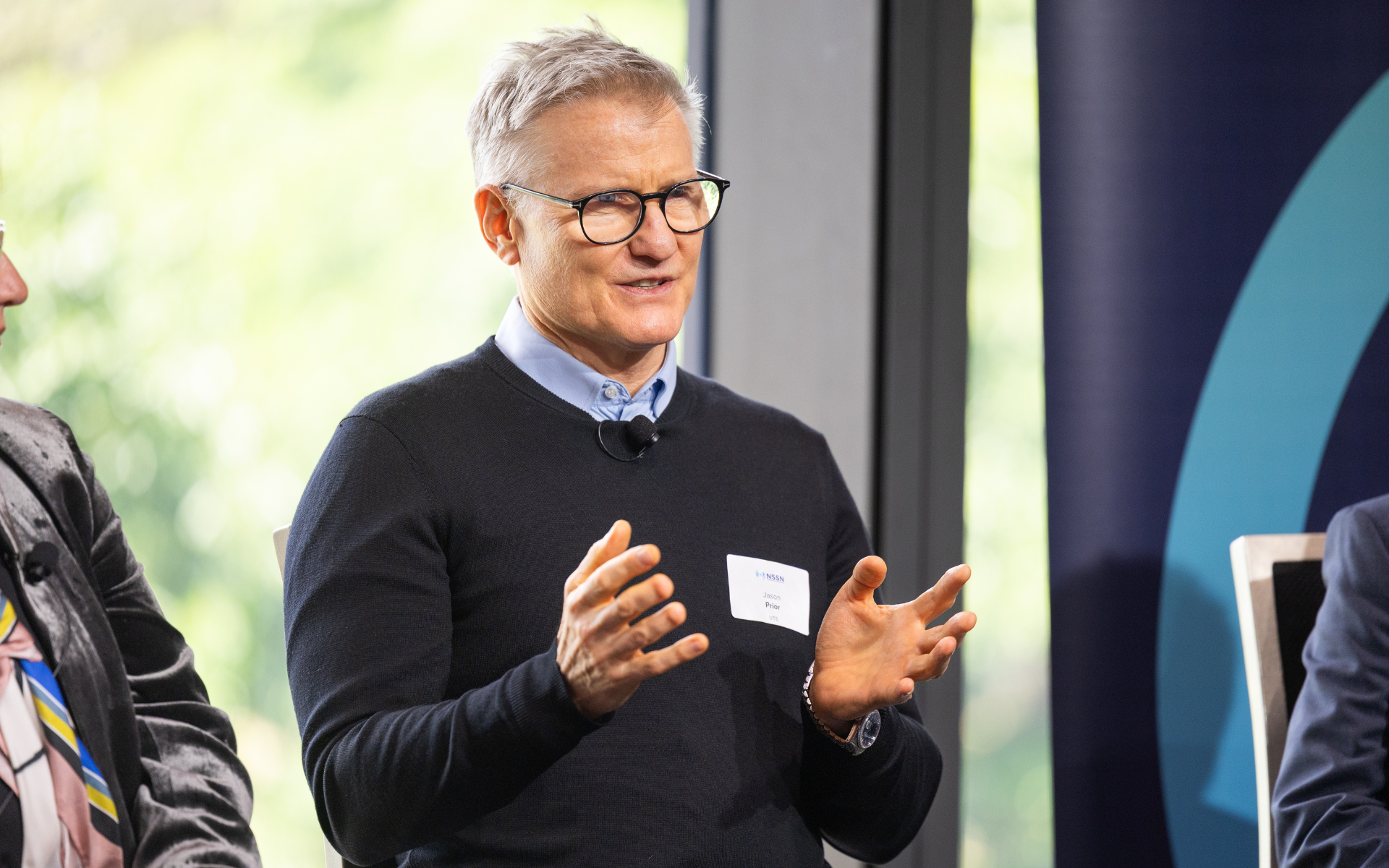Aged care leader says Australia must rethink ageing, care and technology
The NSW Smart Sensing Network hosted its 4th Ageing Forum at NSW Parliament House on 30 October 2025, bringing together leaders from health, government and technology to explore how innovation can support Australians to age well. This article is the third and last in a series unpacking the ideas and conversations shaping the future of ageing in Australia.
The Director of one of Australia’s largest home care organisations has called for a fundamental rethink of how Australia approaches ageing, care, and the role of technology.
Director of Australian Unity, Lucy Brogden
The Director of Australian Unity, Lucy Brogden AM, told the NSSN’s 4th Ageing Forum health and aged care systems remain fragmented, under strain and out of step with the real lives of older people and the families who support them.
She drew on her own carer experience to describe the emotional and logistical load placed on families navigating complex conditions across disconnected health and aged-care systems.
“Between my brother and I… we've lost a bit of work between the two of us (caring for our parents), and the system assumes that’s okay,” Ms Brogden said.
The panellists on the Sensor Care Devices panel (L-R): Moderator Dr Abby Bloom; Consumer advocate Janet McDonald AO; Director of Australian Unity, Lucy Brogden; Professor Jason Prior from the Institute for Sustainable Futures at UTS and NSSN’s Healthy@Home program; Professor Peter Gonski, a geriatrician from UNSW and South Eastern Sydney Local Health District.
She said there was a need to re-examine what “ageing in place” truly means.
The Australian Unity Director argued the evidence underpinning Australia’s policy settings was outdated and collected before COVID-19 and the Aged Care Royal Commission reshaped the realities of ageing and isolation.
“We’ve assumed ageing in place means ageing in your own home, but for many people that now means isolation,” she said.
“Other countries define ageing in place as ageing in your community… not alone with a four-hour care visit a week.”
While technology forms a crucial part of her own family’s care plan, she warned that access, cost and capability issues still limit its impact.
“There is a subsidy for some of the diabetes sensors… but not all,” she said.
“Then there’s the GP who is frustrated because they have no capacity to connect and see some of these data tools.”
Ms Brogden asked for better support for carers, including clearer recognition in digital platforms and improved interoperability between systems.
“If I could get one window (showing all data)… one place where sugar, heart rhythms and everything feed in together… how cool would that be?”
Professor Jason Prior from the Institute for Sustainable Futures
Ms Brodgen was part of a panel of experts which warned the forum that technology, funding models and red tape need to evolve to make it possible for older Australians to stay at home as they age.
Professor Jason Prior from the Institute for Sustainable Futures at UTS and the NSSN’s Healthy@Home program said the project surveyed more than 1,000 Australians aged 65–85 to understand their attitudes toward using health technologies.
It found around half already use some form of device, but confidence drops sharply in those over 85.
While 86 percent reported feeling generally comfortable with technology, many worried about their cognitive or physical ability to use it, and nearly a third lacked confidence altogether.
He said the real challenge is not inventing new devices, “but actually connecting those technologies to the people who need to use them is probably one of the biggest challenges we’ve had,” and doing so in ways people can genuinely use and trust.
Their research shows older Australians want to stay at home for three main reasons: comfort, staying in control of their own lives, and maintaining their community and local connections.
Consumer advocate Janet McDonald AO
Professor Prior said a wave of new technologies—from platforms like MyMedicWatch to tools which help people stay connected with service providers—are emerging to support older Australians to live safely and independently at home.
Consumer advocate Janet McDonald AO spoke from personal experience caring for her 87-year-old husband, describing a “mountain of paperwork” just to install a simple bathroom handrail.
“The services are there, but I think just the administration of these services is enormous, and the cost to government… it’s being used very poorly and I think it [is] very poorly managed.”
Professor Peter Gonski, a geriatrician from UNSW and South Eastern Sydney Local Health District, outlined the district’s geriatric flying squad model where specialist teams go into aged-care facilities to deliver hospital-level care.
Professor Peter Gonski, a geriatrician from UNSW and South Eastern Sydney Local Health District
This approach dramatically reduces delirium, confusion and falls by avoiding unnecessary hospital admission and treating people in an environment where staff and family know them well.
Their research shows that around 90% of residents they assess can be safely treated on-site rather than being transferred to hospital.
The team is now extending the service into people’s homes, recognising that 85% of older Australians live in the community, though home care is more complex without 24-hour staffing.
“We’re not trying to do it just because we want to minimise (hospital) beds. We’re trying to do it because the best place to look after a person is where they live.”
Lucy Brogden said the biggest challenge with digital health tools isn’t inventing them but funding and sustaining them, because unlike traditional medical products, technology needs constant updates, support and clear responsibility for who pays to keep it running.
She warned that while many promising services exist, Australia still lacks a consistent, scalable model to maintain them long term.





